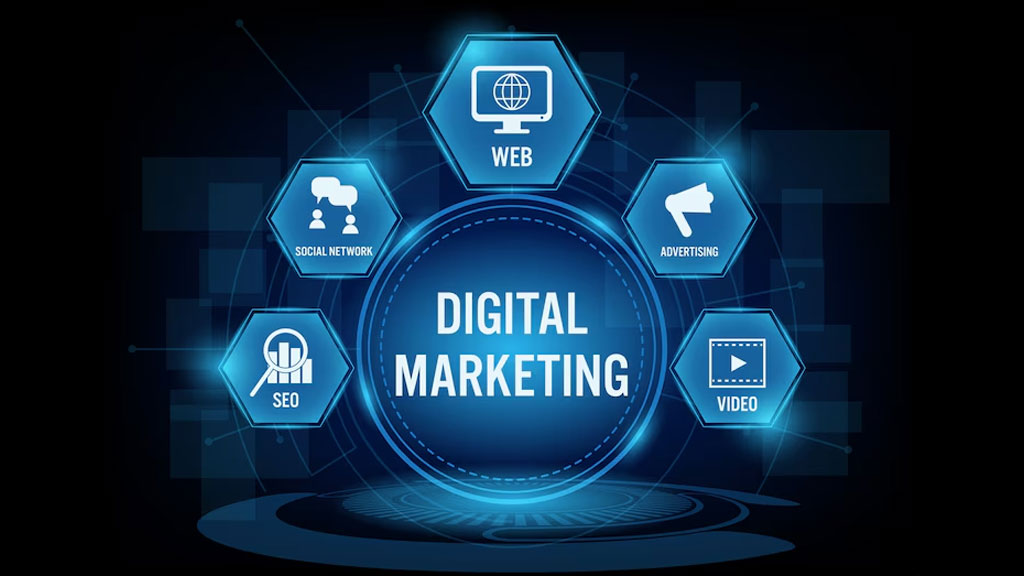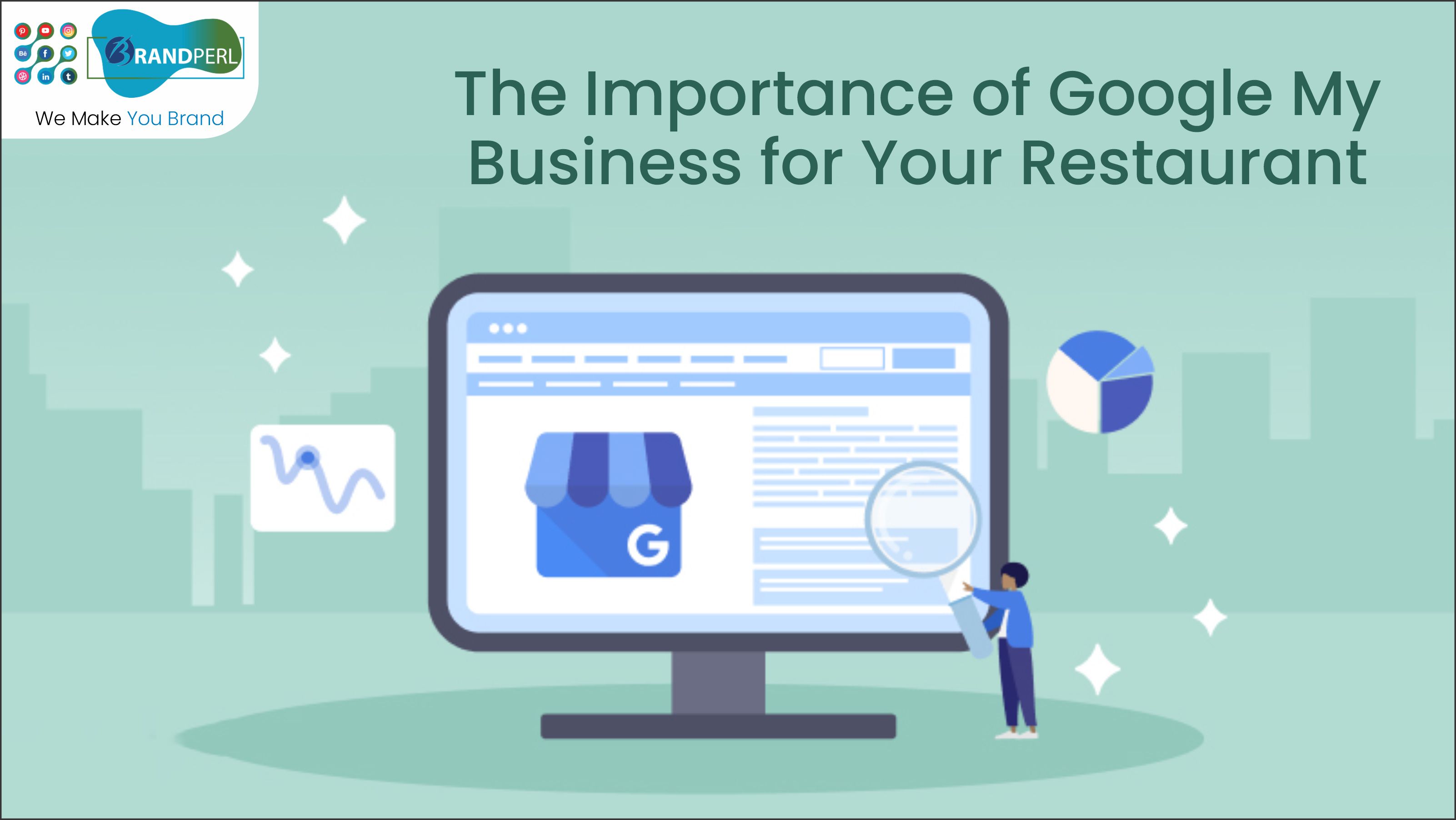.jpg)
In the digital age, the success of a business is increasingly determined by its online presence and marketing strategies. Digital marketing offers unparalleled advantages that traditional marketing channels simply cannot match. Let's explore these advantages in detail.
Digital marketing breaks down geographical barriers, allowing businesses to reach customers across the globe with just a few clicks. With billions of people using the internet every day, the potential reach is enormous.
The ability to target audiences based on demographics, interests, behaviors, and more, ensures that marketing efforts are not wasted on uninterested parties. This precision targeting helps in crafting personalized messages that resonate with the audience.
Unlike traditional marketing, digital marketing provides real-time data on the performance of campaigns. Metrics such as click-through rates, conversion rates, and engagement levels offer insights that can be used to optimize future campaigns.
SEO enhances a website's visibility in search engine results, making it easier for potential customers to find a business when they search for relevant keywords. This organic reach is crucial for long-term growth.
PPC allows businesses to place ads in prominent positions on search engines and other websites. The pay-per-click model ensures that businesses only pay when someone actually engages with their ad, making it a cost-effective strategy.
Platforms like Facebook, Twitter, and LinkedIn provide businesses with the opportunity to engage with their audience in a more informal and interactive manner. Social media marketing can help build brand loyalty and community around a business.
By creating and distributing valuable content, businesses can attract and retain a clearly defined audience. Content marketing is key to driving profitable customer action and establishing thought leadership.
Email marketing remains one of the most direct and personal forms of digital marketing. It allows businesses to send targeted messages, promote products or services, and build long-term relationships with customers.
AI is transforming digital marketing by personalizing content recommendations, targeting ads, and automating tasks. It enables businesses to deliver a more tailored experience to their customers.
For businesses looking to leverage digital marketing, acquiring the right skills is essential. Digital marketing courses provide the knowledge and practical insights needed to navigate the digital landscape effectively.
Digital marketing's power to reach, target, and measure is transforming how businesses grow and connect with their customers. By embracing these capabilities, businesses can achieve greater market presence, deeper audience engagement, and measurable success that drives growth and profitability.
If you're looking to harness the full potential of digital marketing, consider exploring courses and resources that can enhance your skills in this area.

Digital marketing continues to evolve rapidly, driven by technological advancements, changing consumer behavior, and the ever-expanding digital landscape. In 2024, certain skills are particularly sought after by employers and essential for professionals looking to thrive in the field. This blog explores the most in-demand digital marketing skills in 2024, highlighting their significance, how to acquire them, and their impact on career growth.
Data analysis has become integral to digital marketing strategies as businesses seek to understand customer behavior, measure campaign effectiveness, and make data-driven decisions. Skills in data analysis include:
Analytics Platforms: Proficiency in tools like Google Analytics, Adobe Analytics, and social media analytics tools.
Data Visualization: Ability to interpret and present data effectively using charts, graphs, and dashboards.
Data Interpretation: Analyzing metrics such as conversion rates, bounce rates, ROI, and customer lifetime value (CLV).
SEO remains a cornerstone of digital marketing, focusing on optimizing websites to rank higher in search engine results pages (SERPs). Key skills in SEO include:
Keyword Research: Identifying relevant keywords with high search volumes and low competition.
On-Page and Off-Page SEO: Optimizing content, meta tags, backlinks, and technical aspects of websites.
SEO Tools: Using tools like SEMrush, Ahrefs, Moz, and Google Search Console for analysis and optimization.
Content marketing involves creating and distributing valuable, relevant, and consistent content to attract and engage a target audience. Skills in content marketing include:
Content Strategy: Developing a content plan aligned with business goals and audience needs.
Content Creation: Writing compelling and SEO-friendly articles, blogs, videos, infographics, etc.
Content Distribution: Utilizing channels like social media, email marketing, and SEO to distribute content effectively.
Social media platforms play a crucial role in digital marketing strategies, offering opportunities for brand awareness, engagement, and customer acquisition. Skills in social media marketing include:
Platform Proficiency: Mastery of platforms such as Facebook, Instagram, Twitter, LinkedIn, TikTok, and emerging platforms.
Content Curation: Creating and sharing engaging content, including visuals, videos, and interactive posts.
Community Management: Building and nurturing online communities, responding to comments, and handling customer inquiries.
Paid advertising involves promoting products or services through paid channels like Google Ads, social media ads, and display advertising. Key skills in PPC include:
Campaign Management: Setting up and managing ad campaigns across platforms.
Keyword Bidding: Understanding bid strategies and optimizing keyword bids for better ROI.
Ad Performance Analysis: Monitoring ad performance, A/B testing, and adjusting campaigns based on data insights.
Email marketing remains a powerful tool for nurturing leads, building relationships with customers, and driving sales. Skills in email marketing include:
Email Automation: Setting up automated email sequences based on user actions and behaviors.
Segmentation: Segmenting email lists based on demographics, behavior, and engagement.
Copywriting: Writing compelling subject lines and email content that drives opens, clicks, and conversions.
Marketing automation involves using software to automate repetitive marketing tasks, such as email campaigns, social media posting, and lead nurturing. Skills in marketing automation include:
Platform Proficiency: Familiarity with tools like HubSpot, Marketo, Mailchimp, and Pardot.
Workflow Creation: Building automated workflows and sequences that optimize lead generation and customer retention.
Analytics and Optimization: Analyzing automation performance metrics and optimizing workflows for better results.
CRO focuses on improving the percentage of website visitors who complete desired actions, such as making a purchase or filling out a form. Skills in CRO include:
A/B Testing: Conducting split tests to compare different versions of web pages or campaigns.
User Experience (UX) Design: Enhancing website usability, navigation, and layout to improve conversions.
Data Analysis: Using analytics to identify conversion bottlenecks and opportunities for improvement.
With the increasing use of mobile devices, mobile marketing skills are crucial for optimizing campaigns and reaching mobile users effectively. Skills in mobile marketing include:
Responsive Design: Ensuring websites and emails are optimized for mobile devices.
Mobile Advertising: Creating ads tailored for mobile platforms and leveraging geo-targeting.
App Marketing: Promoting mobile applications through app stores, paid advertising, and in-app marketing strategies.
AI and machine learning are transforming digital marketing by enabling personalized experiences, predictive analytics, and automation. Skills in AI and machine learning include:
Predictive Analytics: Using AI algorithms to forecast customer behavior and trends.
Personalization: Implementing AI-driven personalization in email marketing, content recommendations, and customer service.
Chatbots and Virtual Assistants: Developing and integrating AI-powered chatbots for customer support and lead generation.
Online Courses and Certifications: Platforms like Coursera, Udemy, and LinkedIn Learning offer courses on digital marketing, SEO, analytics, and more.
Hands-On Experience: Gain practical experience through internships, freelance projects, or personal websites and campaigns.
Networking and Mentorship: Join digital marketing communities, attend webinars, and connect with industry professionals for insights and guidance.
Stay Updated: Follow industry blogs, attend conferences, and subscribe to newsletters to stay informed about the latest trends and best practices.
In 2024, digital marketers equipped with these in-demand skills will be well-positioned to drive growth, innovate strategies, and navigate the evolving digital landscape. Whether you're starting your career in digital marketing or looking to advance to higher levels, acquiring and honing these skills will not only enhance your professional capabilities but also contribute to your organization's success in a competitive market. Embrace lifelong learning, adapt to technological advancements, and apply these skills strategically to achieve your goals in digital marketing.

Search Engine Optimization (SEO) continues to evolve rapidly as search engines refine their algorithms and user expectations change. Staying abreast of SEO terminology is essential for digital marketers, content creators, and website owners aiming to improve their online visibility and rankings. In this blog, we will explore 30 SEO terms that are crucial to understand in 2024, covering foundational concepts, strategies, and emerging trends.
SEO encompasses strategies and techniques to increase the quantity and quality of traffic to a website through organic search engine results.
SERP refers to the page displayed by search engines in response to a user query, listing relevant websites, ads, and other results.
Keywords are words or phrases that users type into search engines to find information. They are crucial for optimizing content and attracting targeted traffic.
Long-tail keywords are specific, detailed phrases with lower search volume but higher intent. They often convert better than broader keywords.
A backlink is a link from one website to another. Backlinks are important for SEO as they indicate a site's authority and credibility.
Anchor text is the clickable text in a hyperlink. It provides context to search engines about the content of the linked page.
Meta tags are HTML tags that provide metadata about a web page. Common types include meta title and meta description, which influence click-through rates on SERPs.
Alt text (alternative text) is a description of an image used by search engines to understand the content of the image. It improves accessibility and SEO.
Crawling is the process by which search engines discover and index web pages. It involves bots (crawlers or spiders) scanning websites for content.
Indexing is the process of adding web pages into a search engine's database. Indexed pages are eligible to appear in search results.
Ranking refers to the position of a web page on a SERP for a specific keyword or query. Higher rankings typically lead to more organic traffic.
An algorithm is a set of rules and calculations used by search engines to determine the relevance and ranking of web pages in search results.
Organic traffic refers to visitors who land on a website through unpaid (organic) search results rather than through paid advertisements.
PPC is an online advertising model where advertisers pay a fee each time their ad is clicked. It complements SEO efforts but requires a budget.
On-page SEO involves optimizing individual web pages to improve their search engine rankings and attract organic traffic. It includes optimizing content, meta tags, and internal linking.
Off-page SEO refers to activities conducted outside of a website to improve its search engine rankings. This includes link building, social media marketing, and influencer outreach.
Local SEO focuses on optimizing a website to rank better for local search results. It's crucial for businesses targeting local customers, such as restaurants or service providers.
Technical SEO involves optimizing website infrastructure and settings to improve its crawling, indexing, and website speed. It includes tasks like optimizing robots.txt, sitemaps, and HTTPS implementation.
A canonical URL is the preferred version of a web page that search engines should index when there are multiple versions of the same content (e.g., www vs. non-www).
Schema markup is structured data added to HTML to help search engines understand the content of a web page better. It enhances search results with rich snippets.
A 301 redirect is a permanent redirect from one URL to another. It passes the link equity (ranking power) from the old URL to the new one.
A 404 error indicates that a web page is not found. Proper handling of 404 errors is essential for user experience and SEO.
Keyword density is the percentage of times a keyword or phrase appears in a piece of content compared to the total number of words. It should be natural and not overused.
Bounce rate is the percentage of visitors who leave a website after viewing only one page. A high bounce rate can indicate poor user experience or irrelevant content.
Conversion rate is the percentage of visitors who complete a desired action (e.g., making a purchase, filling out a form) on a website. It measures the effectiveness of SEO and other marketing efforts.
User experience refers to how users interact with a website. Good UX is crucial for reducing bounce rates, increasing time on site, and improving conversions.
Mobile optimization ensures that a website functions well and provides a good user experience on mobile devices. It is increasingly important for SEO as mobile traffic grows.
Keyword research is the process of identifying and analyzing search terms that users enter into search engines. It informs content strategy and SEO efforts.
Link building is the process of acquiring backlinks from other websites. It improves domain authority and search engine rankings but requires high-quality and relevant links.
Black hat SEO refers to unethical or manipulative techniques used to improve search engine rankings. It can lead to penalties and should be avoided.
Understanding these 30 SEO terms is essential for anyone involved in digital marketing, content creation, or website management. By mastering these concepts, you can optimize your website effectively, improve search engine rankings, and attract targeted organic traffic. SEO is a dynamic field, and staying updated with the latest trends and best practices is key to maintaining a competitive edge in 2024 and beyond. Whether you're a beginner or a seasoned SEO professional, applying these terms strategically will help you navigate the complexities of search engine optimization and achieve your online marketing goals.

In the digital realm, where countless brands vie for attention, Search Engine Optimization (SEO) reigns supreme. It's the art and science of aligning your online presence with the intricate algorithms of search engines to earn the coveted top spots in search results. This is not just a mere tactic; it's a strategic element that can make or break a business's online success.
Imagine the internet as a vast kingdom, and at its center lies the throne of visibility. SEO is the key to this throne. By optimizing your website with relevant keywords, quality content, and a user-friendly design, you increase your chances of being found by potential customers. It's about being visible in a sea of information, and SEO ensures that your brand doesn't just exist, it thrives.
Organic traffic, the visitors who find your website through unpaid search results, is the crown jewel of SEO. These users are more likely to engage with your content and convert into customers because they're actively searching for solutions that you offer. Unlike paid advertising, which stops the moment you halt payments, organic traffic is a gift that keeps on giving, provided you maintain your SEO strategies.
SEO isn't just about pleasing the search engine gods; it's also about the royal court – your users. Search engines prioritize websites that offer a seamless user experience. This includes mobile optimization, fast loading times, and intuitive navigation. By enhancing the user experience, you're not only boosting your SEO rankings but also ensuring that visitors stay longer and engage more with your content.
Content is the decree by which SEO operates. High-quality, informative, and engaging content is favored by search engines and users alike. By regularly updating your website with fresh content, you signal to search engines that your site is relevant and valuable. Moreover, great content is shareable content, which can lead to natural backlinks – another pillar of SEO strength.
While SEO is the king, social media is a powerful ally. Social signals may not directly influence SEO rankings, but the visibility and traffic generated from social platforms can indirectly boost your SEO efforts. Sharing content across social networks increases its reach and the potential for it to be linked back to, which search engines interpret as a sign of quality and relevance.
Keywords are the lineage of SEO. They connect user queries to your content. However, keyword stuffing – the act of cramming as many keywords into your content as possible – is an outdated and penalized practice. Modern SEO focuses on keyword intent and long-tail keywords, which align more closely with how real people search and speak.
SEO is cost-effective. Unlike paid advertising channels that require continuous funding, SEO requires an initial investment followed by ongoing optimization. The return on investment (ROI) for SEO can be significant, as it continues to drive traffic and leads without the need for constant financial input.
SEO is not static; it's a dynamic and ever-evolving field. With search engines constantly updating their algorithms, an SEO strategy must be adaptable and forward-thinking. Voice search optimization, AI, and machine learning are the frontiers of SEO's future kingdom, and staying ahead in these areas ensures that your brand remains in power.
When your website ranks high on search engine results pages (SERPs), it earns trust and credibility from users. People tend to believe that the first few results are the most authoritative and trustworthy. SEO helps you become one of those top results, thus building a loyal following of customers who trust your brand.
SEO is the undisputed king of marketing because it touches upon every aspect of a brand's online presence. From visibility to user experience, from content to credibility, SEO weaves a tapestry of interconnected strategies that drive success. In the digital marketing kingdom, all roads lead to SEO – the path to the throne of online dominance.
I hope this blog post meets your expectations and provides valuable insights into the importance of SEO in marketing! If you need further customization or additional topics covered, feel free to ask.

In today's hyper-connected world, personal branding has emerged as a critical tool for professional development and career growth. It's the conscious effort to create and influence public perception by positioning oneself as an authority in their industry, elevating their credibility, and differentiating themselves from the competition. This blog post explores the myriad ways in which personal branding can propel your career to new heights.
Personal branding is about carving out a niche for yourself in your field of expertise. It's a declaration of your unique value proposition and the distinct skills you bring to the table. By clearly defining who you are professionally, you not only establish your identity but also guide the trajectory of your career.
In a sea of professionals, a strong personal brand helps you stand out. It increases your visibility and makes you more recognizable in your industry. Whether it's through speaking engagements, a professional blog, or social media presence, personal branding puts you on the radar of potential employers, clients, and collaborators.
A well-crafted personal brand is a testament to your reputation and expertise. It builds trust with your audience and peers, showcasing your knowledge and experience. This credibility is invaluable, as it often precedes you in job interviews, negotiations, and when being considered for promotions.
Personal branding transforms networking from a mere exchange of business cards into meaningful connections. It makes you more approachable and relatable, encouraging others to engage with you. A robust network, in turn, opens doors to new opportunities, mentorships, and partnerships.
The job market is volatile, but a strong personal brand can provide stability. It serves as a career safety net, ensuring that you're always in demand. In times of economic downturns or industry shifts, your personal brand can be the anchor that keeps your career afloat.
In the digital age, your online presence is often the first impression you make. A strategic personal brand ensures that this impression is positive and impactful. It allows you to control the narrative around your professional life, highlighting your achievements and thought leadership.
A compelling personal brand doesn't just wait for opportunities; it attracts them. Recruiters and decision-makers are always on the lookout for standout candidates. A strong personal brand that resonates with your industry can lead to unsolicited job offers and unexpected career advancements.
Personal branding paves the way for thought leadership. By sharing insights and contributing to conversations in your field, you position yourself as an influencer. This influence can extend your reach, impact industry trends, and make you a go-to resource for commentary and expertise.
When you're known for your skills and expertise, you have leverage in salary negotiations and contractual discussions. Your personal brand justifies your worth and the value you add to an organization, giving you the upper hand in securing better compensation and benefits.
The process of developing a personal brand requires introspection and self-awareness. It forces you to evaluate your strengths, weaknesses, and aspirations. This self-knowledge is a powerful driver for personal and professional growth, ensuring that your career development aligns with your values and goals.
Personal branding is no longer optional; it's essential for career growth. It's the embodiment of your professional life, encapsulating your skills, experiences, and aspirations. By investing in your personal brand, you're not just enhancing your career prospects; you're taking control of your professional destiny. In the marketplace of talent, make sure the brand of you is one that resonates, inspires, and leads.

In the digital era, the success of a restaurant increasingly hinges on its online presence. Google My Business (GMB) is a pivotal tool for restaurants to enhance their digital footprint and attract more customers. Here's why GMB is essential for your restaurant.
GMB ensures that your restaurant appears in local search results and on Google Maps when potential diners search for places to eat. This increased visibility is crucial as it puts your restaurant in front of customers at the exact moment they are making dining decisions.
Online reviews on GMB serve as social proof and can significantly influence potential customers. Positive reviews build trust and credibility, signaling that your restaurant offers a great dining experience.
GMB allows you to showcase your restaurant's best features, including photos of your dishes, menus, and ambiance. This visual appeal can entice customers and give them a taste of what to expect.
With GMB, you can provide accurate and up-to-date information about your restaurant, such as hours of operation, location, contact details, and more. This helps customers easily find and connect with your business.
GMB provides valuable insights into how customers interact with your listing. You can track how many people called your restaurant directly from the listing, visited your website, or requested directions, allowing you to measure the effectiveness of your online presence.
Perhaps one of the most significant advantages of GMB is that it's a free marketing tool. It allows you to promote your restaurant without the need for a large marketing budget, making it accessible for all sizes of businesses.
GMB offers a platform for engaging with customers through questions and answers, responding to reviews, and posting updates about your restaurant. This engagement is key to building a loyal customer base.
A well-optimized GMB listing can improve your restaurant's local search engine optimization (SEO), making it more likely to appear in the coveted "Local Pack" at the top of search results.
In a competitive market, having a GMB listing can give you an edge over restaurants that don't. It's an opportunity to stand out and attract customers who are deciding where to dine.
Google My Business is an indispensable tool for restaurants looking to thrive in the digital age. It offers a range of benefits from increased visibility to customer engagement, all without cost. By leveraging GMB effectively, restaurants can not only attract more customers but also build a strong online reputation that can lead to long-term success. Contact brandperl expert consultant to uplift your business.